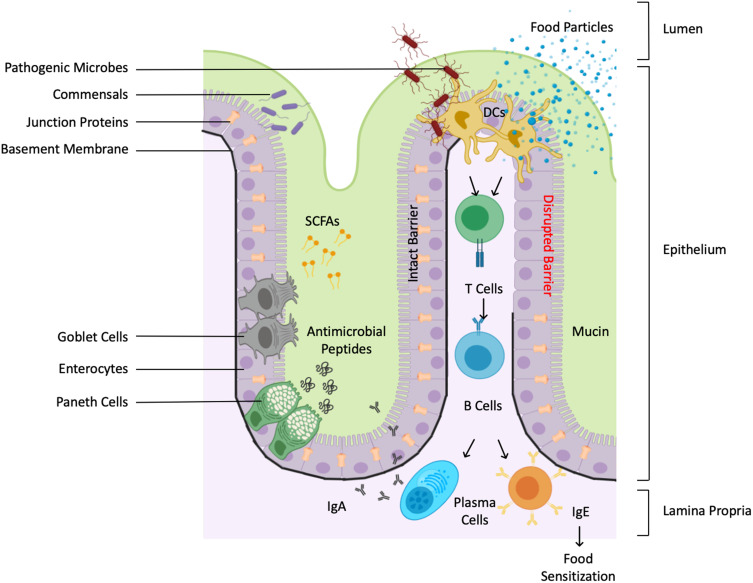Figure 2.
Immunity-microbiome crosstalks at gastrointestinal tract. Schematic diagram depicting the gut mucosa illustrated with the various structural and immunological barriers and defenses. The intestinal mucosa consists of an epithelial layer lined by an inner mucus layer and an underlying lamina propria. The epithelial layer forms a physical barrier, facilitated by intracellular tight junctions, various cell types and their secretory products. Paneth cells produce protective antimicrobial peptides, while goblet cells produce mucin, the major component of the mucus coating. The mucus layer is rich in microbial colonies, which can synthesize immunomodulatory molecules such as SCFAs. The lamina propria are rich in immune cells that play a fundamental role in immune surveillance. Dendritic cells transmit environmental signals to activated plasma cells to produce protective secretory immunoglobulin A (sIgA). A leaky intestinal barrier can lead to displaced food antigens in the lamina propria, which in turn can activate Th2 Cell and class-switch B cells to produce specific immunoglobulin E (sIgE) production, causing sensitization to food allergens.

